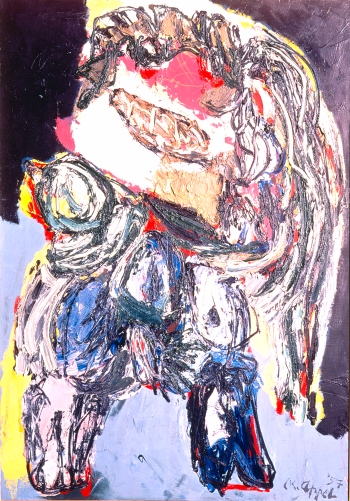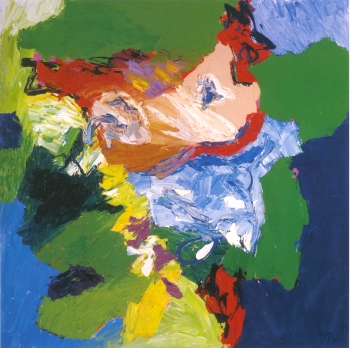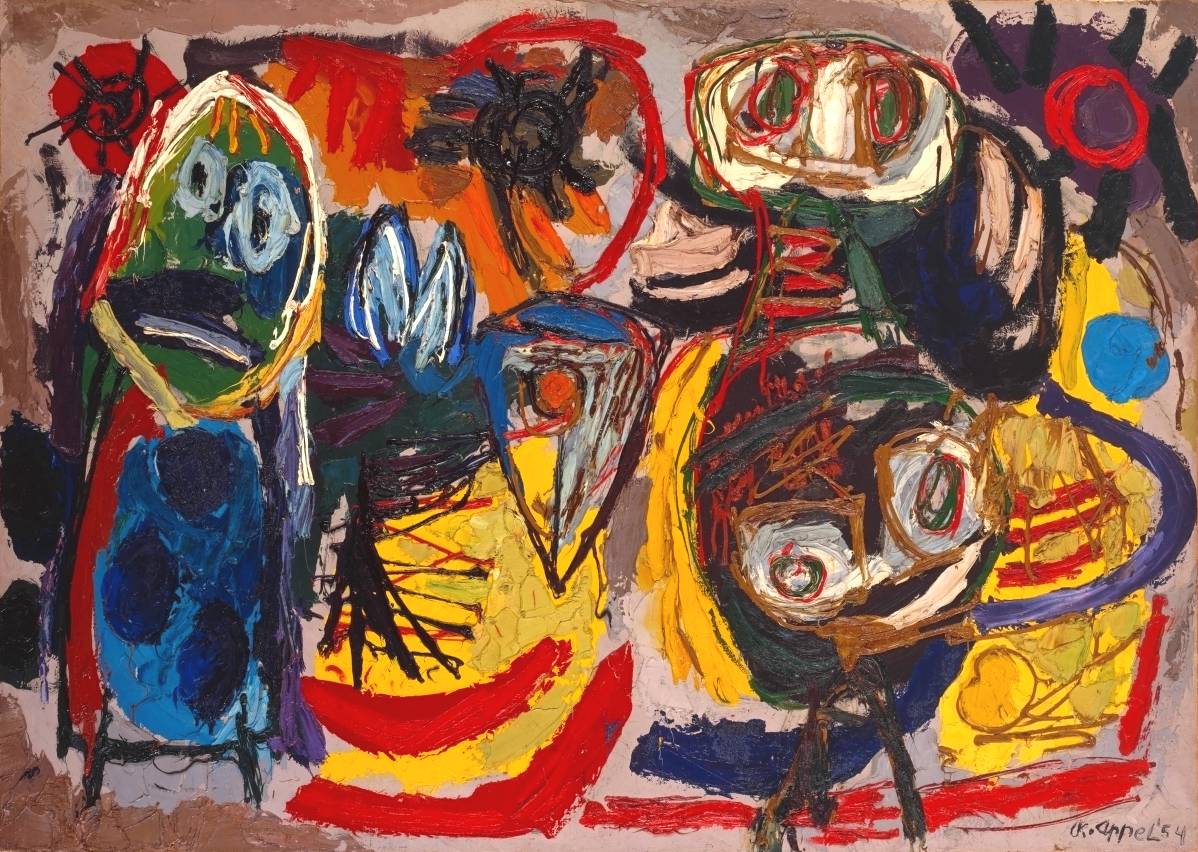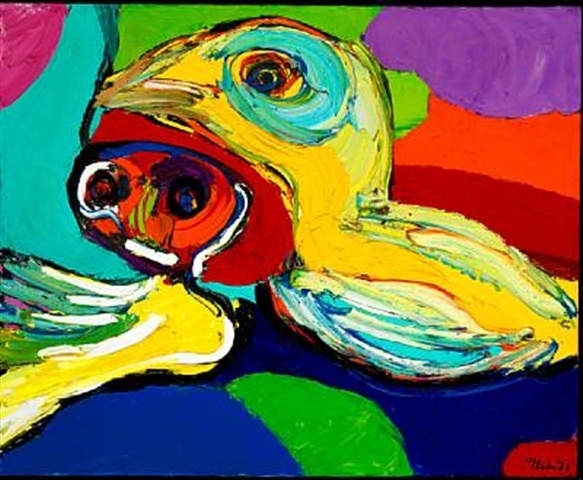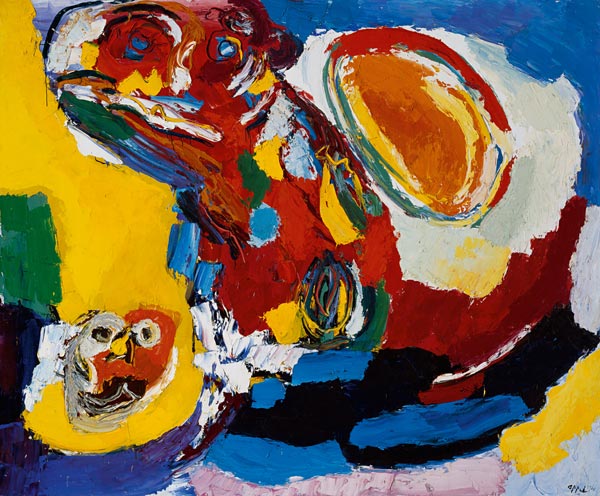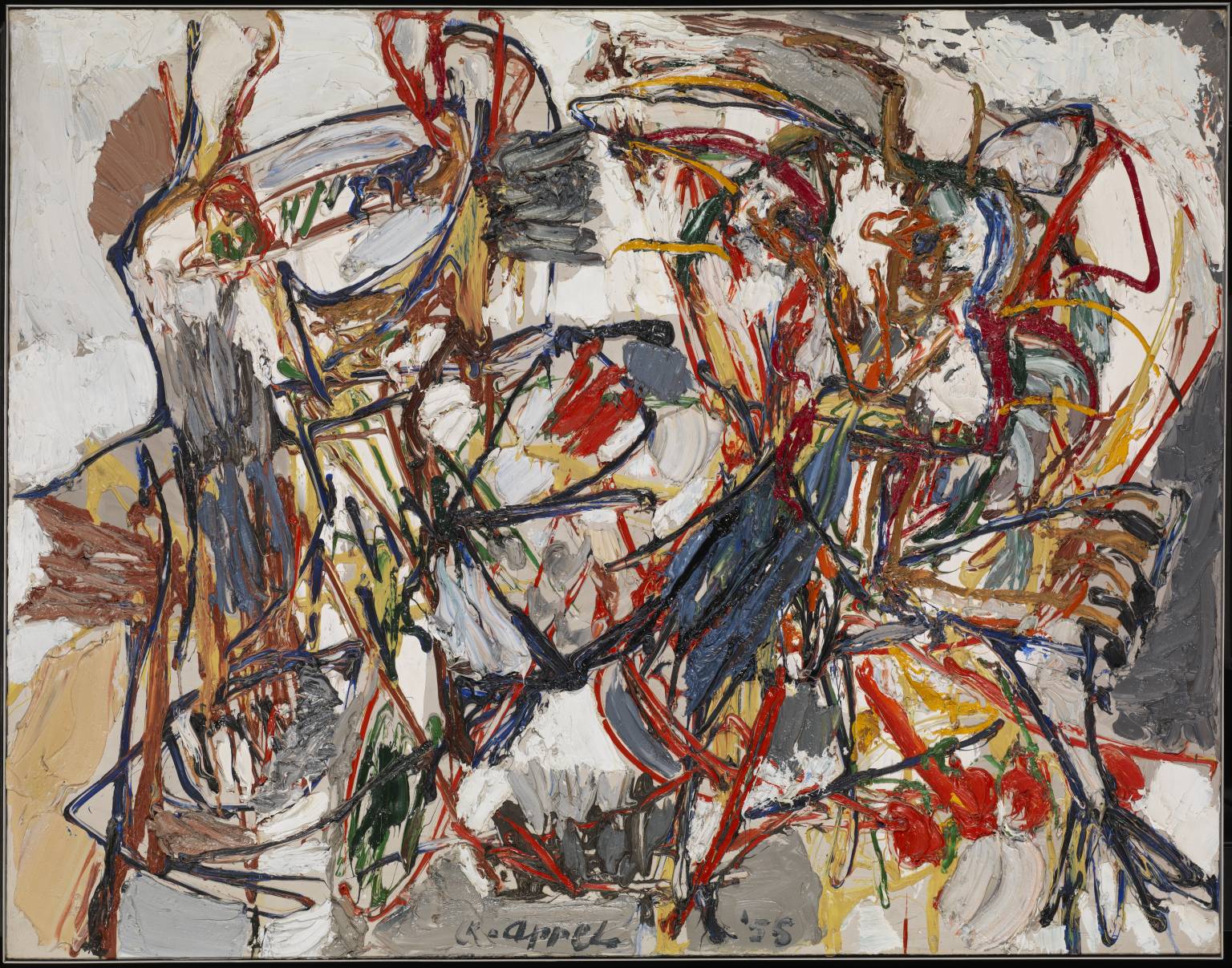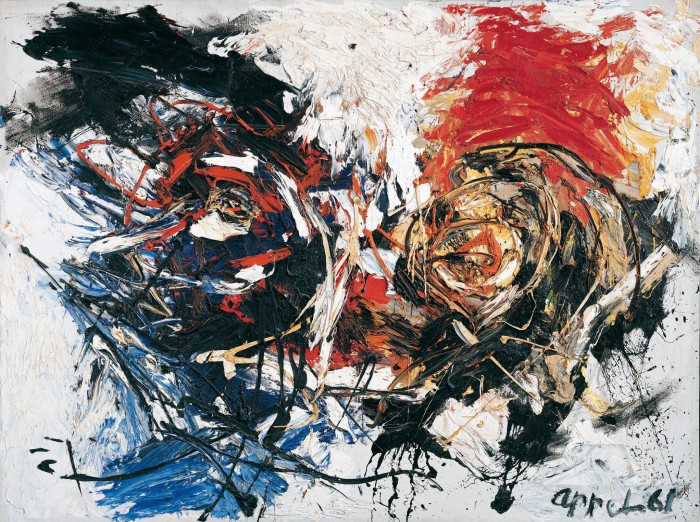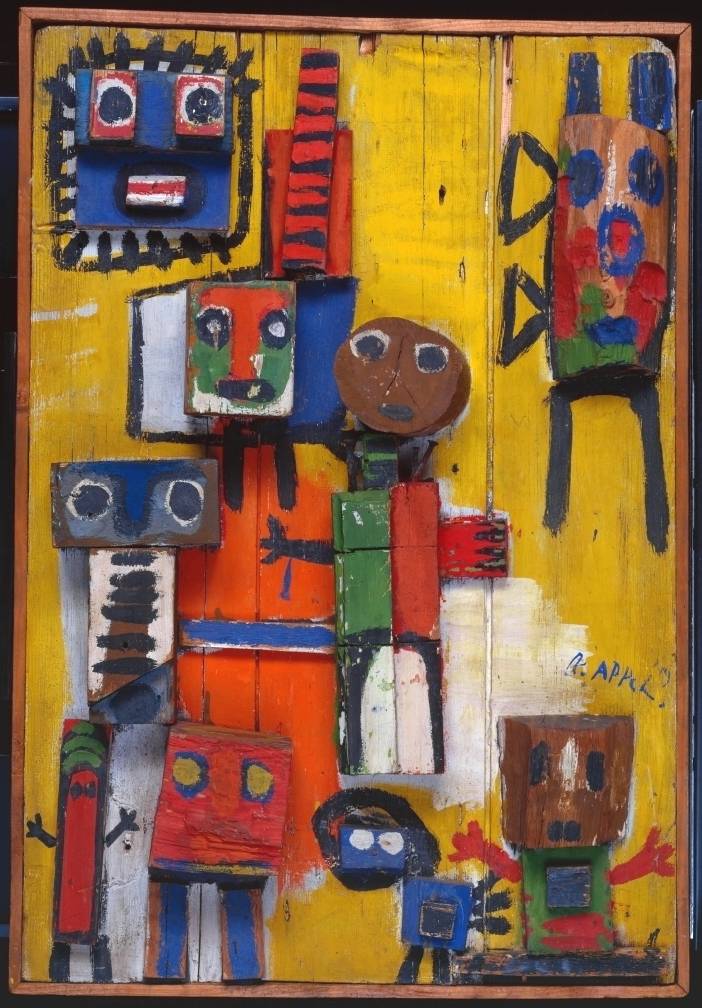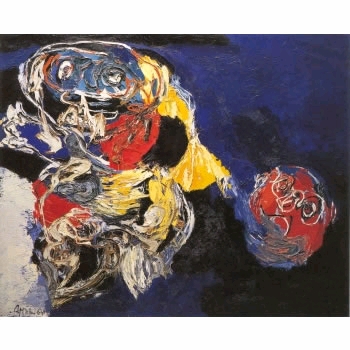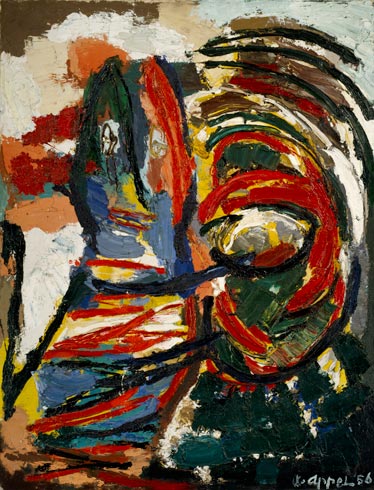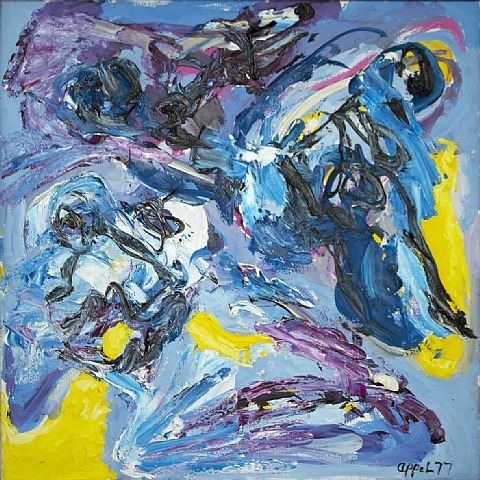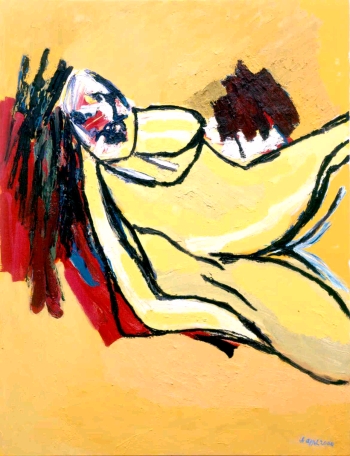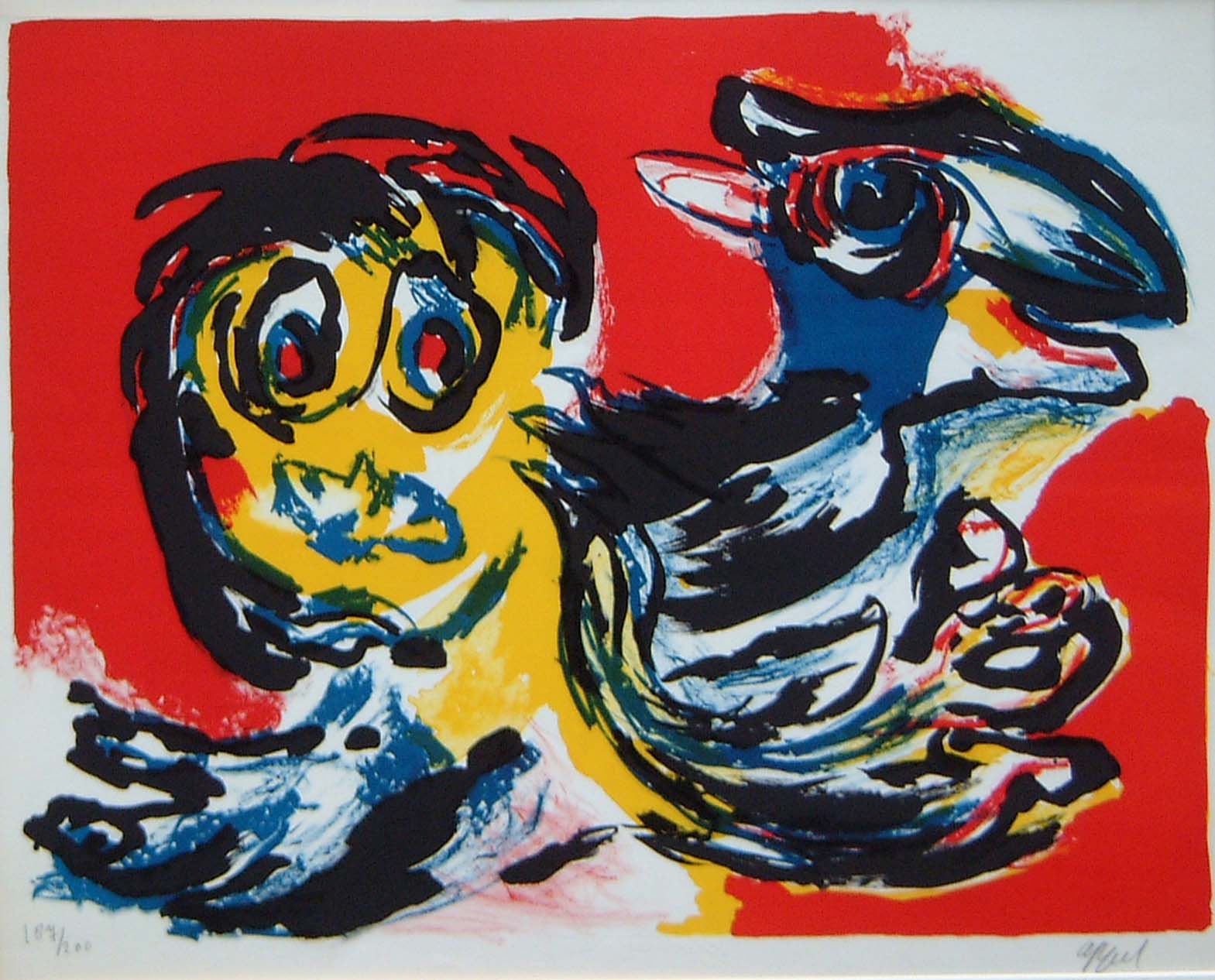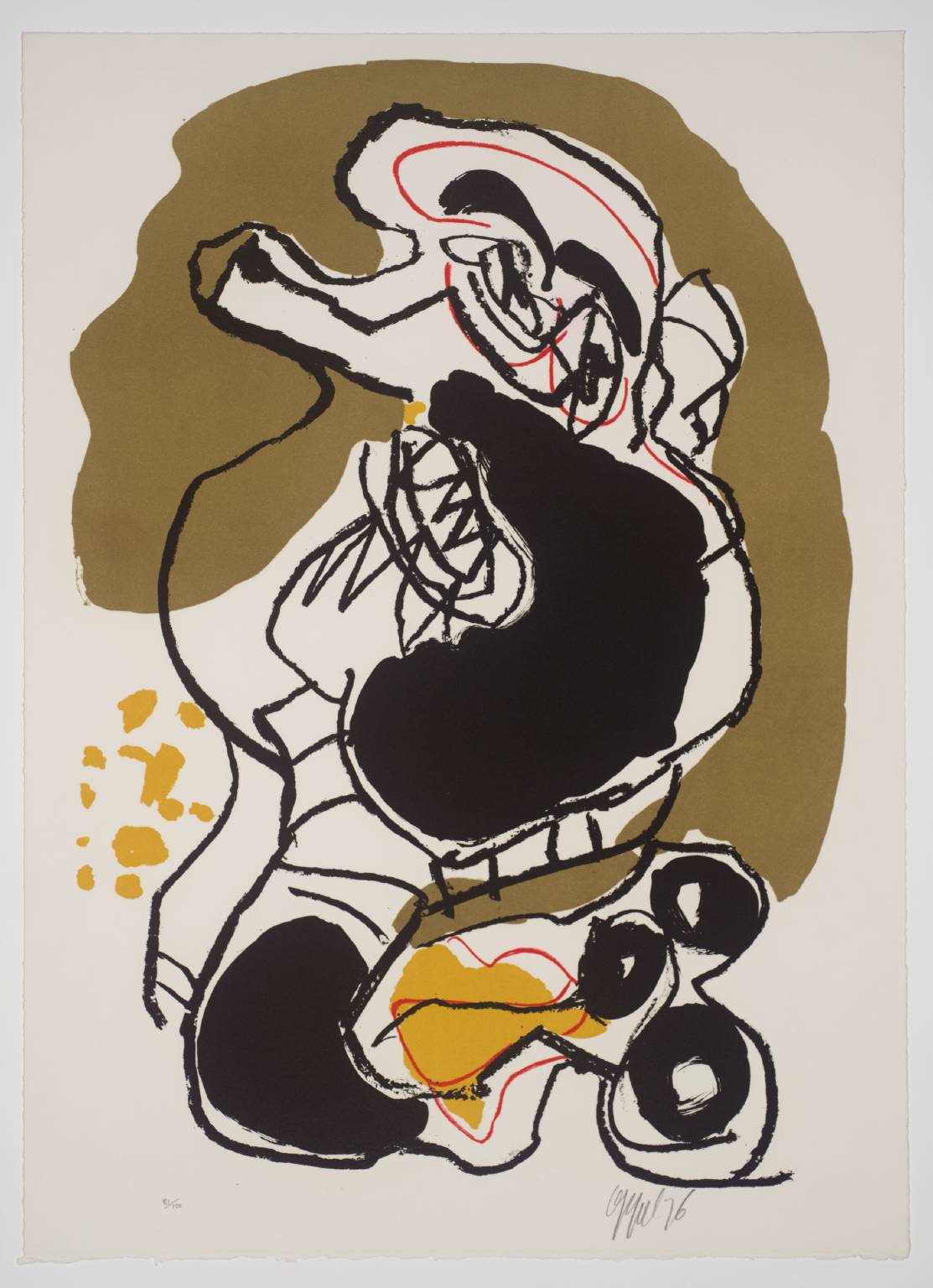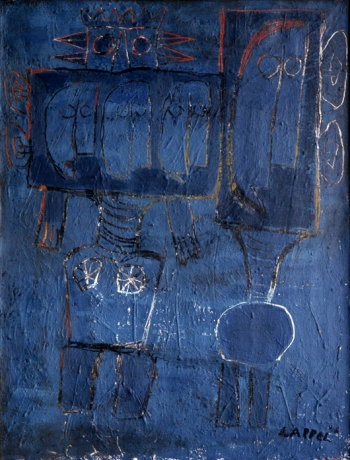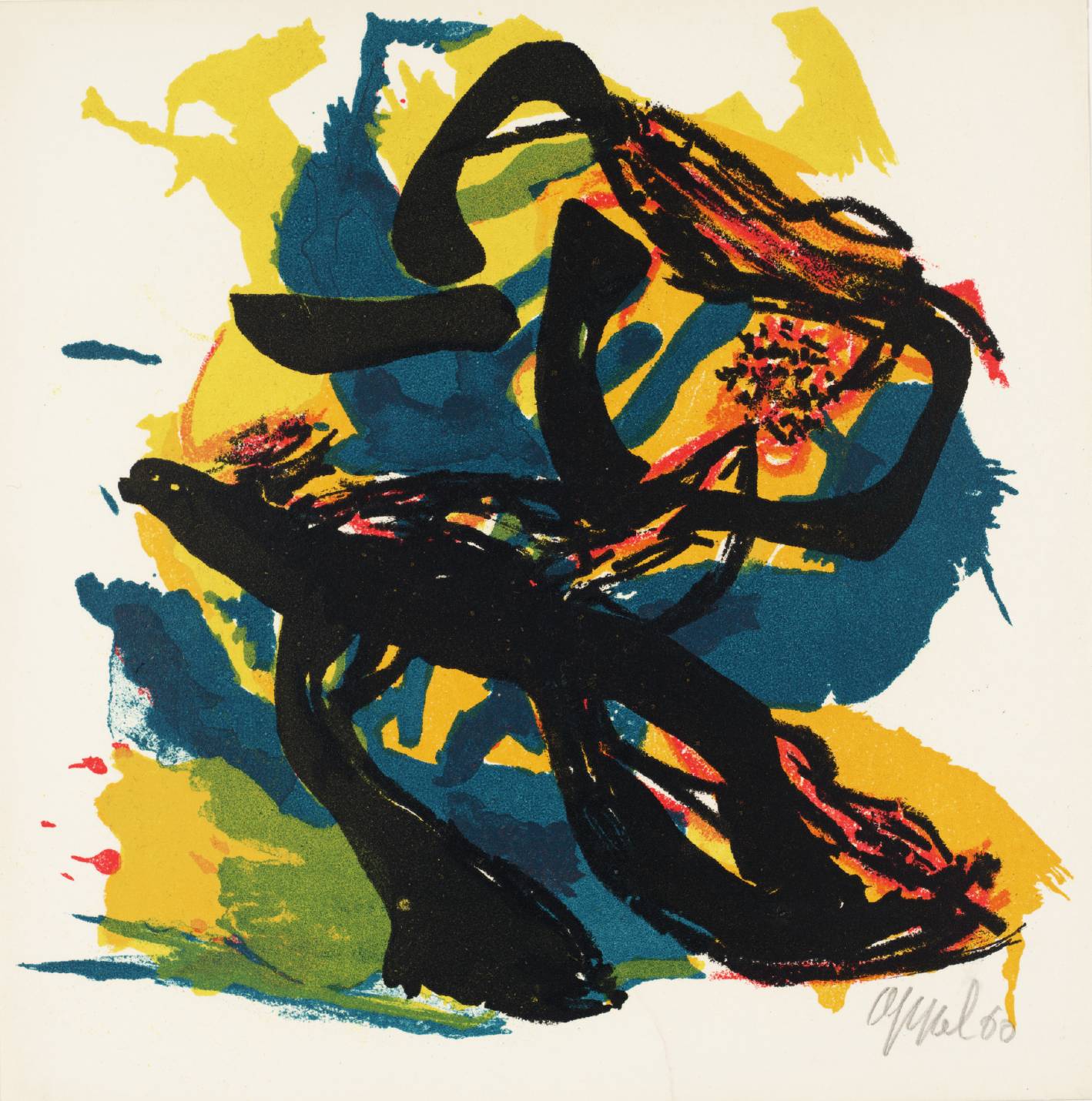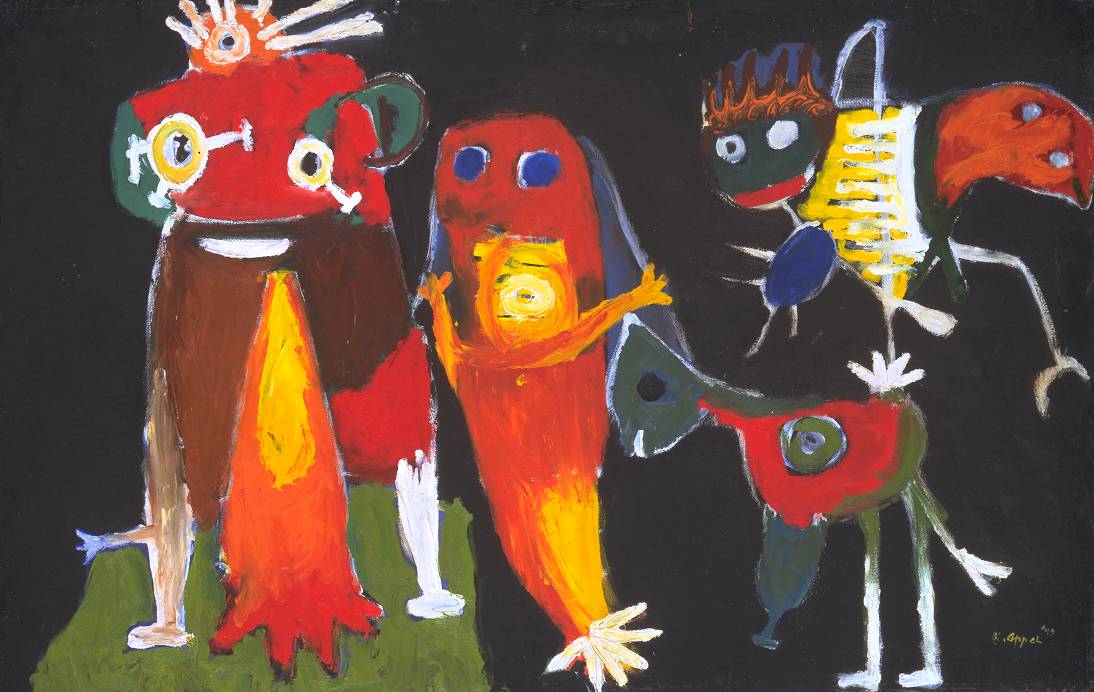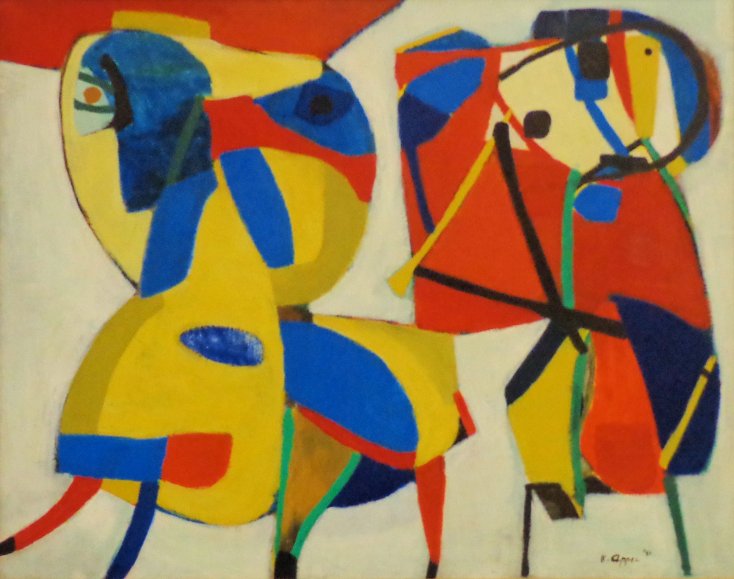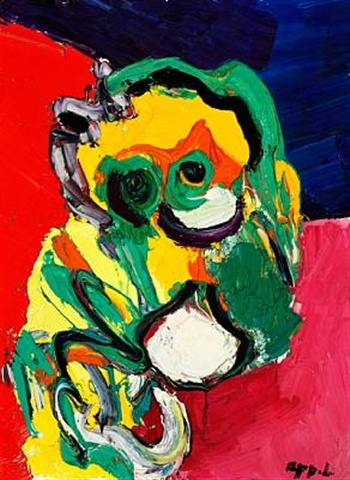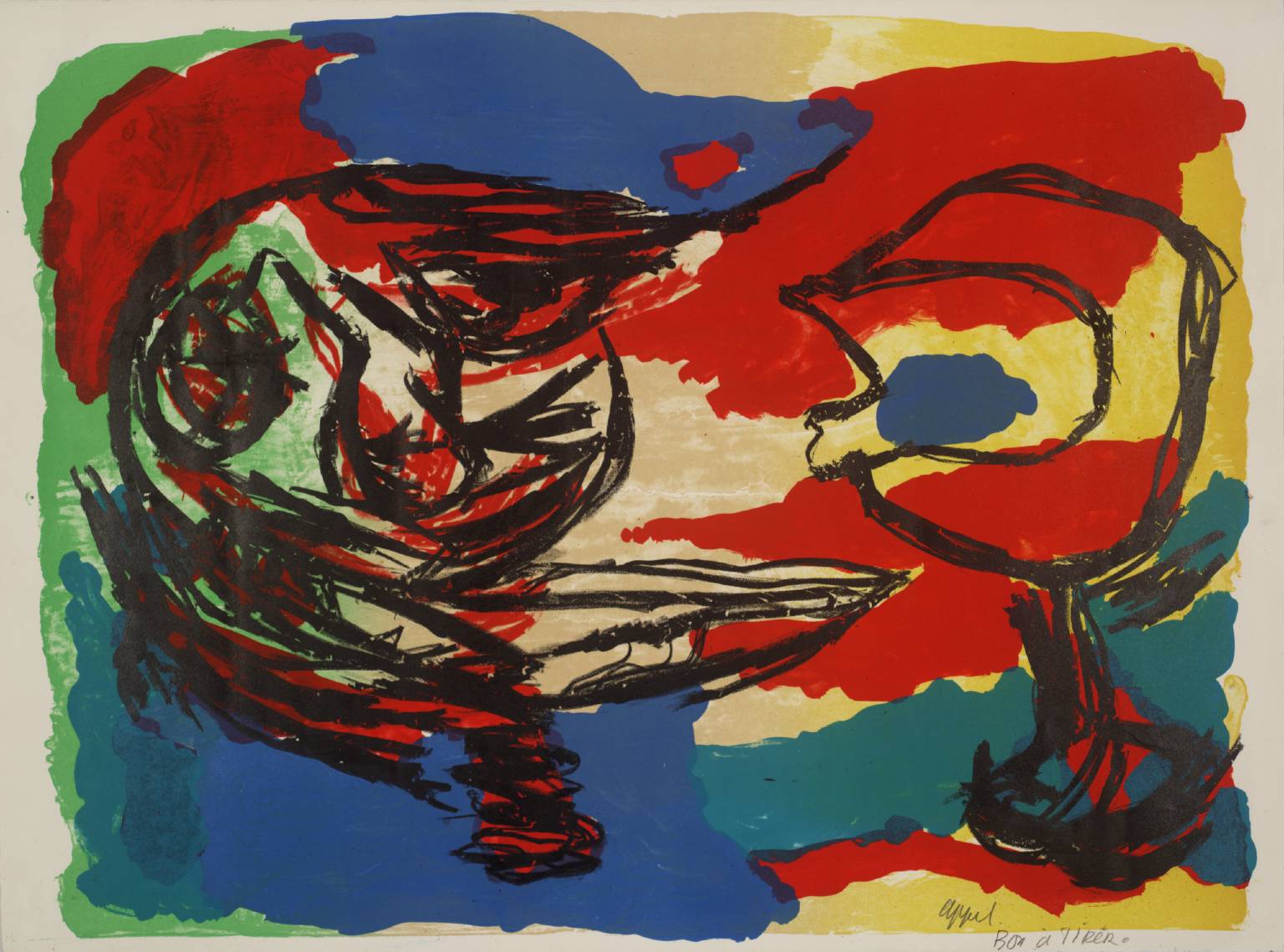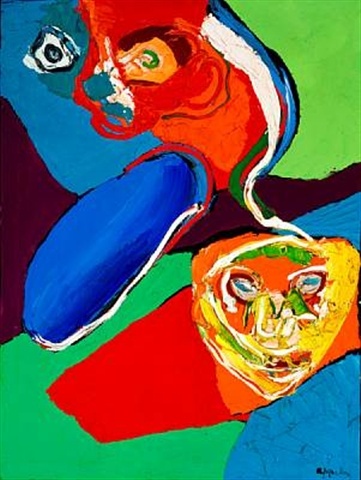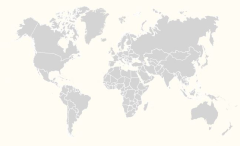Karel Appel was an expressionist Dutch painter. He was a member of the famous COBRA, the European group of the late 1940s to early 1950s, which promoted spontaneous expressionism and abstract features in painting. Appel's paintings incorporate applications of vibrant, violent colors often possessing a primal, childlike quality or a schizophrenic innocence.
Background
Christiaan Karel Appel was born on April 25, 1921, in his parents’ house at 7 Dapperstraat, Amsterdam. His father, Jan Appel, owned a barbershop. His mother, born Johanna Chevalier, was a descendant of French Huguenots. Karel Appel had three brothers.
Education
Karel Appel studied art from 1940 to 1943 at the Rejksakademie van Beeldende Kunsten, the Royal Academy of Fine Arts during the German occupation and befriended young painter Corneille and, some years later, Constant.
Career
Karel's parents opposed his choice to become an artist, leading him to leave home. This was also necessary to hide himself from the German police so that he would not be picked up and sent to Germany to work in the weapon industry. Appel produced his first real painting on canvas, which was a still life of a fruit basket at the age of fourteen. On his fifteenth birthday, his wealthy uncle Karel Chevalier gave him a paint set and an easel and some lessons on painting.
In 1946, his first solo show was held in Groningen, Netherlands. He also participated in the Jonge Schilders exhibition at the Stedelijk Museum of Amsterdam and created a buzz in the art world, as it generated a huge scandal and many objections in the press and public. About this time, Appel was influenced first by Pablo Picasso and Henri Matisse, then by the French brute-art artist Jean Dubuffet. In 1947, he started sculpting with various used materials and painted them in bright colors such as white, red, yellow, blue, and black. Karel Appel became the member of Nederlandse Experimentele Group in Holland along with the young Dutch painters Anton Rooskens, Theo Wolvecamp, and Jan Nieuwenhuys. Belgian writer Hugo Claus also joined the group afterwards.
In 1948, Appel joined the COBRA group an acronym for Copenhagen, Brussels, and Amsterdam — the hometowns of the founding members. The COBRA movement, which pushed spontaneous expressionism and abstract features, represented a turn from the more formal, geometric European art of the time. COBRA members believed painting opened a porthole into the human psyche. He was accompanied by Dutch artists Corneille, Constant, and Jan Nieuwenhuys, and the Belgian poet Christian Dotremont.
Although the COBRA group did not gain any popularity in Netherlands, it was very well received in Denmark. By 1939, inspired by Danish and Nordic mythology, Danish artist had already started making spontaneous art. In 1949, Appel painted a mural for the cafeteria of the city hall in Amsterdam. The piece named “Questioning Children”, which portrayed the smiling, yet mourning faces of the children abandoned after the war, created so much controversy and made city hall workers so uncomfortable that it was covered for nearly a decade.
In the face of hostile Dutch reactions, Appel moved to Paris in 1950 together with Constant and Corneille. Appel then traveled to Mexico, the USA, Yugoslavia and Brazil and earned international reputation. He spent several years living between Florence and New York City. While in Paris, Appel befriended Danish painter Jorn and Hugo Claus, the Flemish poet, novelist and playwright who later in 1962 wrote an extensive study on Karel Appel’s work. During the 1950s, Appel fell in love with the jazz movement and painted portraits of jazz masters Dizzy Gillespie, Miles Davis, Count Basie, and Sarah Vaughan. In 1954 Karel Appel received the UNESCO prize at the Venice Biennale.
Appel died on May 3, 2006 at his home in Zürich, Switzerland. He had been suffering from heart ailment. He was buried on May 16, 2006 at the Père Lachaise Cemetery in Paris, France. Years before his death, Appel established the Karel Appel Foundation, whose purpose is "to preserve [Appel's] artworks, to promote public awareness and knowledge of Karel Appel's oeuvre and to supervise publication of the Oeuvre Catalogue of the paintings, the works on paper and the sculptures." In the wake of his death, the Foundation (based in Amsterdam) functions as his official estate in addition to its primary service as an image archive.
Views
Appel’s style is characterized by thick layering of pigment, violent brushwork, and a crude, reductive figuration.
Quotations:
“Painting, like passion, is an emotion full of truth and rings a living sound, like the roar coming from the lion's breast. To paint is to destroy what preceded. I never try to make a painting, but a chunk of life.”
Membership
Karel Appel became the member of Nederlandse Experimentele Group in Holland along with the young Dutch painters Anton Rooskens, Theo Wolvecamp and Jan Nieuwenhuys. In 1948, Appel joined the COBRA group an acronym for Copenhagen, Brussels and Amsterdam — the hometowns of the founding members.
Personality
Quotes from others about the person
Some critics discerned violence or even madness in Mr. Appel's work, with its liberal use of red and its semi-figurative images of grotesque limbs and distorted, grimacing faces. But to other viewers, the unrestrained masses of paint, which Mr. Appel sometimes squeezed onto the canvas straight from the tube, embodied the life force itself.





